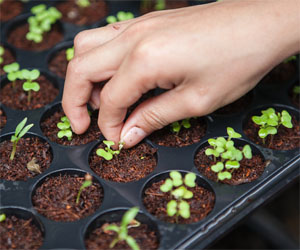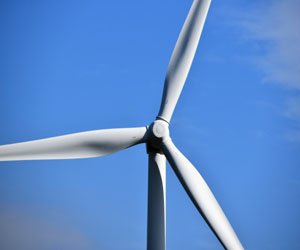


A Sustainable Future

In a world increasingly focused on sustainability and environmental responsibility, the concept of environmentally friendly homes has gained significant traction. These homes are designed with a commitment to reducing their environmental footprint, promoting energy efficiency, and creating a healthier living environment for their occupants. In this article, we'll explore what environmentally friendly homes are, their key features, and the benefits they offer for both homeowners and the planet.
Defining Environmentally Friendly Homes
Environmentally friendly homes, often referred to as eco-friendly or green homes, are constructed and operated with a focus on reducing their impact on the environment. These homes adopt a holistic approach to sustainability, addressing various aspects of the building's design, construction, and operation. The goal is to minimize resource consumption, reduce energy usage, and limit greenhouse gas emissions.
Key Features Of Environmentally Friendly Homes
Energy Efficiency: Environmentally friendly homes prioritize energy efficiency through measures like well-insulated walls, roofs, and windows. They often incorporate high-efficiency heating and cooling systems and utilize energy-efficient lighting and appliances to reduce energy consumption.
Renewable Energy Sources: Many eco-friendly homes feature renewable energy sources such as solar panels, wind turbines, or geothermal heating and cooling systems. These technologies allow homeowners to generate their own clean energy and even feed excess energy back into the grid.
Water Efficiency: Water conservation is a critical component of environmentally friendly homes. Features like low-flow faucets, water-efficient appliances, and rainwater harvesting systems help reduce water consumption and lower utility bills.
Sustainable Materials: The construction of these homes often relies on sustainable and recycled materials, such as reclaimed wood, bamboo flooring, and recycled metal. This not only reduces the demand for new resources but also minimizes waste.
Indoor Air Quality: Environmentally friendly homes prioritize indoor air quality through the use of non-toxic and low-VOC (volatile organic compounds) paints and finishes. Additionally, efficient ventilation systems promote clean and healthy indoor air.
Natural Light And Passive Solar Design: Utilizing natural light through strategic window placement and passive solar design principles can reduce the need for artificial lighting and heating.
Landscaping And Outdoor Features: The landscaping surrounding these homes often includes native, drought-resistant plants, which require less water and maintenance. Additionally, rain gardens and permeable surfaces help manage stormwater runoff.
Benefits Of Environmentally Friendly Homes
Lower Utility Bills: Energy-efficient appliances, insulation, and renewable energy sources result in lower monthly utility bills, saving homeowners money in the long run.
Reduced Environmental Impact: Environmentally friendly homes help reduce greenhouse gas emissions, resource consumption, and water waste, contributing to a more sustainable planet.
Healthier Living Environment: Improved indoor air quality and the use of non-toxic materials create a healthier living space, reducing the risk of health issues associated with poor air quality.
Higher Property Values: Eco-friendly homes often have higher property values due to their energy efficiency and sustainable features.
Long-Term Savings: While the initial cost of building or retrofitting an environmentally friendly home can be higher, the long-term savings on energy and maintenance costs can outweigh the upfront investment.
Environmentally friendly homes represent a significant step towards a more sustainable and responsible way of living. They provide homeowners with a range of financial, environmental, and health benefits, while also contributing to a greener and more sustainable future. As awareness of the importance of environmental responsibility grows, the popularity of environmentally friendly homes is likely to continue rising, making them an integral part of the future of housing.
A Sustainable Approach To Water Management
 The Importance Of Water Harvesting Systems
The Importance Of Water Harvesting Systems
Water harvesting, also known as rainwater harvesting, represents a forward-thinking approach to water management for several reasons:
Conservation: Water harvesting helps conserve precious freshwater resources by utilizing rainwater for non-potable purposes, reducing the demand on conventional water sources.
Environmental Stewardship: These systems promote responsible water use, reduce runoff, and contribute to the health of local ecosystems by preventing soil erosion and aiding in groundwater recharge.
Water Resilience: In the face of climate change and increased instances of drought, water harvesting can provide a dependable source of water for a variety of applications.
Cost Savings: By reducing reliance on treated water from utilities, water harvesting systems can lead to lower water bills and savings for both homeowners and businesses.






Strategies And Implications
 Higher yields in agriculture refer to the increased production of crops, livestock, or other agricultural products per unit of land, water, or other resources. This increase in productivity is essential for several reasons:
Higher yields in agriculture refer to the increased production of crops, livestock, or other agricultural products per unit of land, water, or other resources. This increase in productivity is essential for several reasons:
1. Food Security: With a global population that continues to expand, the need for increased food production is evident. Higher yields help ensure that there is enough food to feed everyone.
2. Economic Growth: Agriculture is a significant driver of economic growth in many countries. Higher yields can boost rural economies, create jobs, and increase income for farmers and agricultural businesses.
3. Environmental Sustainability: Efficient farming practices that result in higher yields can help reduce the environmental impact of agriculture. By producing more food with fewer resources, we can minimize habitat destruction, water usage, and greenhouse gas emissions.
Strategies For Achieving Higher Yields
Numerous strategies and technologies contribute to higher yields in agriculture:
1. Improved Crop Varieties: Developing and adopting high-yielding crop varieties through selective breeding and genetic modification is a primary strategy. These varieties are often more disease-resistant and better suited to specific environmental conditions.
2. Precision Agriculture: The use of technology, such as GPS, sensors, and data analysis, allows farmers to make precise decisions about planting, irrigation, and fertilization. This optimizes resource use and boosts yields.
Nurturing Our Lifeline
 Human Survival: Water is essential for drinking, cooking, and sanitation. Access to clean and safe water is a fundamental human right, yet it remains out of reach for millions around the world.
Human Survival: Water is essential for drinking, cooking, and sanitation. Access to clean and safe water is a fundamental human right, yet it remains out of reach for millions around the world.
Agriculture: Agriculture is the largest consumer of water globally. Crops and livestock rely on water for growth and sustenance, making it indispensable for food production.
Ecosystems: Aquatic ecosystems, from rivers and lakes to oceans, support biodiversity and help maintain the balance of nature. These ecosystems provide essential services such as water purification and flood regulation.
Industrial Processes: Industries depend on water for manufacturing and energy production. Water resources play a pivotal role in supporting economic activities and industrial growth.
Challenges Facing Water Resources
Despite the undeniable importance of water resources, they face several challenges:
Water Scarcity: Many regions worldwide are grappling with water scarcity, where the demand for water surpasses the available supply. This issue is exacerbated by population growth, urbanization, and climate change.
Water Pollution: Pollution from agricultural runoff, industrial discharges, and inadequate sanitation contaminates water sources, making them unsafe for consumption and detrimental to ecosystems.
Opportunities And Challenges For A Changing World
 The world's population has been steadily increasing for centuries, driven by a combination of factors, including increased life expectancy, reduced mortality rates, and, in some regions, high fertility rates. While the global population growth rate has been slowing down, it remains a significant concern due to its implications on resources, infrastructure, and quality of life.
The world's population has been steadily increasing for centuries, driven by a combination of factors, including increased life expectancy, reduced mortality rates, and, in some regions, high fertility rates. While the global population growth rate has been slowing down, it remains a significant concern due to its implications on resources, infrastructure, and quality of life.
One of the challenges associated with rapid population growth is the strain it places on resources. As the number of people on the planet increases, so does the demand for essentials like food, water, energy, and housing. This growing demand can lead to resource scarcity, environmental degradation, and increased competition for limited resources.
Moreover, population growth often has economic implications. While a growing population can contribute to a larger labor force, which can be a source of economic growth, it can also lead to unemployment and underemployment if job opportunities do not keep pace with the increase in the labor force. Balancing economic growth with the needs of a growing population is a delicate challenge for governments and policymakers.
Urbanization is closely linked to population growth. As more people move to cities in search of better opportunities, urban areas experience increased pressure on housing, transportation, and social services. Rapid and unplanned urbanization can lead to inadequate infrastructure, housing shortages, and increased pollution, posing health and environmental risks.
The Looming Crisis
 Understanding Water Scarcity
Understanding Water Scarcity
Water scarcity is not simply a lack of water; it is a condition where the demand for water exceeds the available supply or when the quality of water is compromised to the point of being unusable. It is a complex issue with far-reaching consequences:
1. Impact On Human Health: In regions where access to safe drinking water is limited, water scarcity can lead to waterborne diseases, malnutrition, and reduced quality of life.
2. Agricultural Consequences: Agriculture is the largest consumer of water globally. Water scarcity can result in crop failure, food shortages, and reduced income for farmers.
3. Economic And Social Disparities: Vulnerable communities often bear the brunt of water scarcity, as they lack the resources to adapt or mitigate its effects.
Causes Of Water Scarcity
Water scarcity can be attributed to several key factors:
1. Population Growth: As the global population continues to increase, so does the demand for water, for consumption, agriculture, and industry.
2. Climate Change: Altered precipitation patterns, increased temperatures, and changing weather patterns affect the availability of freshwater resources.
Exploring Alternative Energy Sources
 Solar Power: Solar energy is one of the most widely recognized and accessible alternative energy sources. It harnesses the sun's energy through photovoltaic cells, converting sunlight into electricity. Solar panels are now a common sight on rooftops and in solar farms, offering a clean and renewable source of power. The technology has become increasingly affordable and efficient, making it a viable option for both residential and commercial use.
Solar Power: Solar energy is one of the most widely recognized and accessible alternative energy sources. It harnesses the sun's energy through photovoltaic cells, converting sunlight into electricity. Solar panels are now a common sight on rooftops and in solar farms, offering a clean and renewable source of power. The technology has become increasingly affordable and efficient, making it a viable option for both residential and commercial use.
Wind Energy: Wind power has also gained significant traction in the alternative energy landscape. Wind turbines convert the kinetic energy of moving air into electricity. Wind farms, often situated in open, windy areas, have become a prominent feature of many countries' energy grids. The scalability of wind power makes it a flexible and promising energy source.
Hydropower: Hydropower, generated from the energy of flowing water, has been a tried and true source of renewable energy for many years. Large dams and smaller hydroelectric plants generate electricity by harnessing the kinetic energy of water. While these projects can have significant environmental impacts, innovations in small-scale, low-impact hydropower systems are being explored.
Geothermal Energy: Geothermal power taps into the Earth's internal heat. It involves drilling wells to access hot water or steam reservoirs below the Earth's surface and using this thermal energy to generate electricity. Geothermal energy is a reliable source of baseload power and is considered highly sustainable.
Maximizing Space And Minimizing Clutter
 5. Wall-Mounted Shelves
5. Wall-Mounted Shelves
Wall-mounted shelves are a versatile and stylish solution for adding storage space to your home. They can be used in various rooms to display decor, hold books, or store everyday items. By taking advantage of vertical space, you can free up floor space and reduce clutter.
6. Over-Door Storage
Over-door storage solutions are perfect for optimizing small spaces. Hanging racks, hooks, and pockets can be attached to doors to store shoes, accessories, cleaning supplies, or pantry items. These solutions maximize space while keeping items within easy reach.
7. Floating Furniture
Floating furniture, like wall-mounted vanities, desks, and entertainment centers, can make a room feel more spacious by creating the illusion of more floor space. These pieces not only look sleek but also offer storage underneath.
8. Clear Containers And Labels
Clear storage containers are essential for efficient organization. They allow you to see the contents without having to open each container. Use labels to further categorize and identify your belongings, making it easy to find what you need.
Keeping Your Garden Beautiful And Healthy
 Preventative Measures:
Preventative Measures:
The first step in effective weed management is prevention. Here are some strategies to consider:
Mulching: Apply a layer of organic mulch to your garden beds. Mulch not only conserves soil moisture and regulates temperature but also suppresses weed growth by blocking out sunlight.
Landscape Fabric: Landscape fabric or weed barrier cloth can be placed under mulch to provide an extra layer of weed control. It allows water to pass through while inhibiting weed growth.
Plant Density: Plant your garden densely to create competition for sunlight and nutrients, leaving less room for weeds to take hold.
Regular Inspection: Routinely inspect your garden for early signs of weeds. It's much easier to deal with a few weeds when they're small than to tackle a full-blown infestation.
Manual Weed Removal:
When weeds do appear, one of the most effective ways to manage them is through manual removal. Here's how to do it:
Use The Right Tools: Invest in a good set of hand tools for weeding, including a hand trowel, weeder, and a sharp hoe.
Get To The Roots: When weeding, it's crucial to remove the entire plant, including the roots. Weeds left with their roots intact can quickly grow back.
Weed After Rain Or Irrigation: It's easier to remove weeds when the soil is moist. Weeding shortly after rain or watering can make the task less labor-intensive.
Proper Disposal: After weeding, make sure to dispose of the pulled weeds properly. Don't leave them in your garden, as some weeds can regrow from detached pieces.